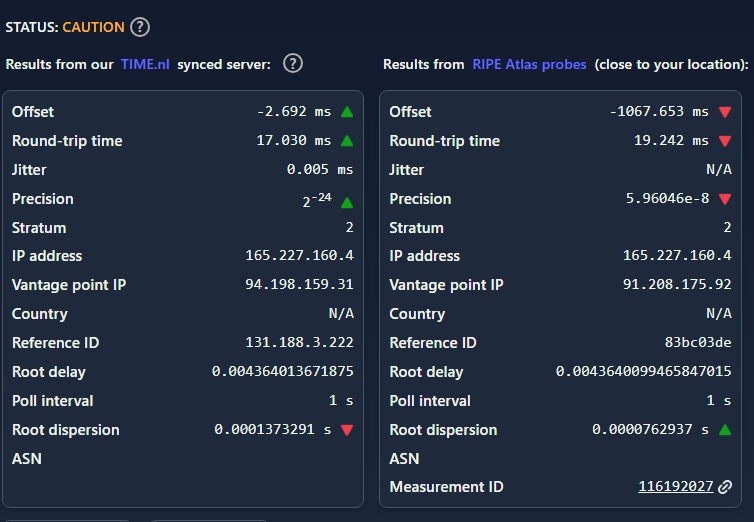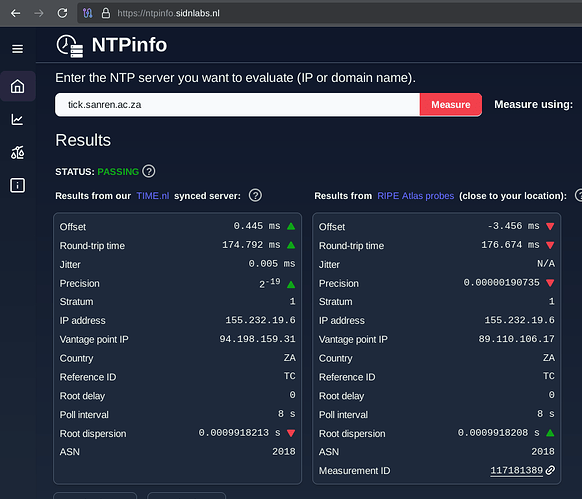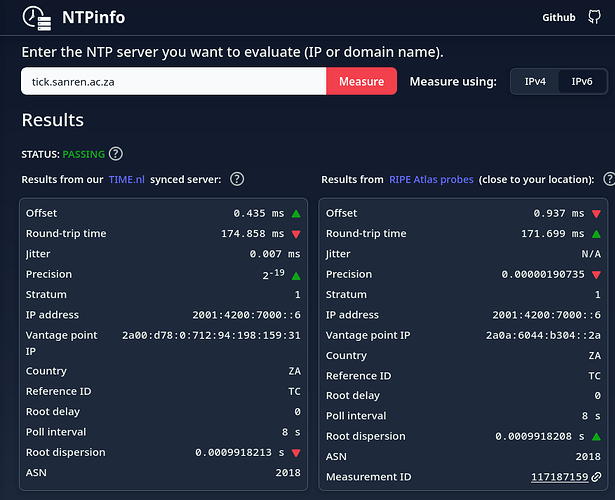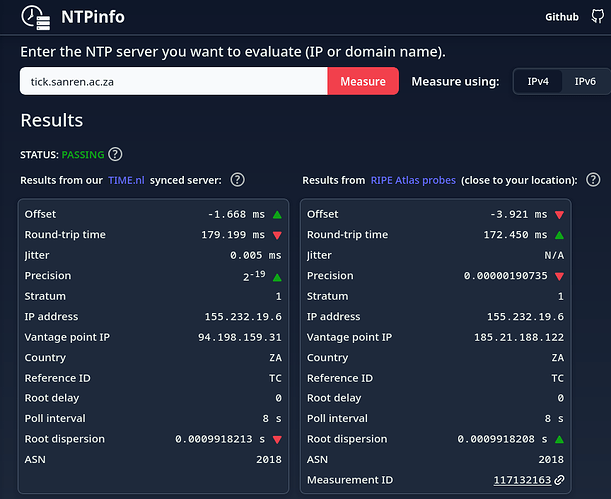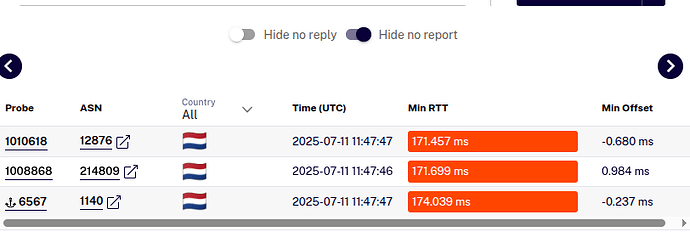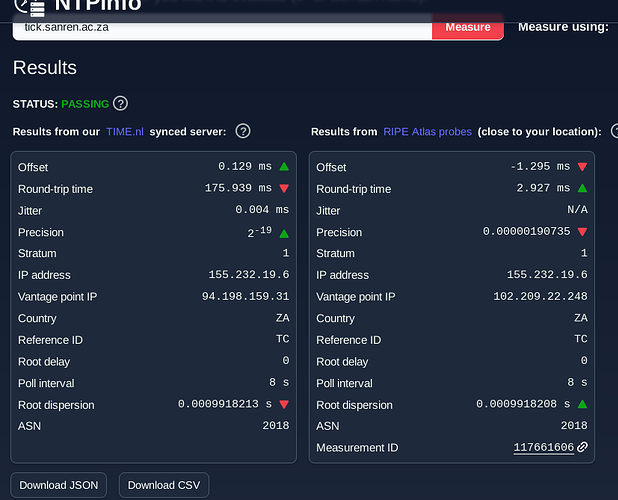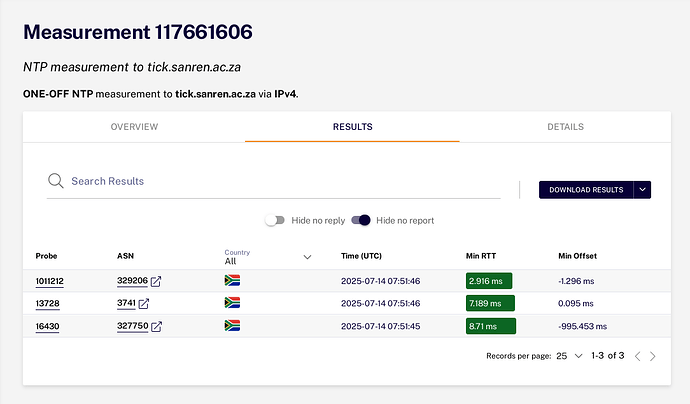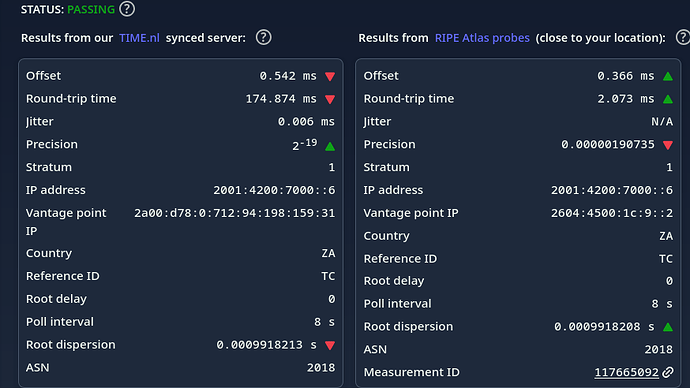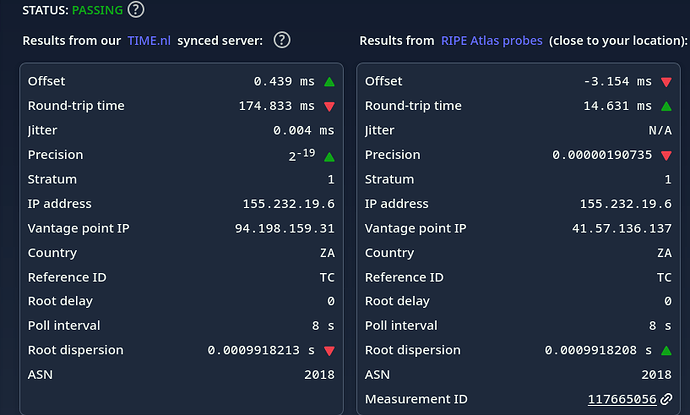thanks a lot, @Kets_One
For some reason all the servers (public as well as my own) appear to be located somewhere in the Atlantic. Burmuda Triangle anyone? 
Fixed. (for now). Reason: it got rate-limtied on how many times a day it could download geoDB from maxmind, so there’s indeed a Easter egg that the students used for geolocation – also for Anycast servers, which is the Bermula Triangle 
I’ve created an issue on GitHub for that
TimeNL-derived precision of my server looks rather high (2E-18). This is unlikely to be the case, since it is not an atomic clock itself, but just syncs to GPS or even DCF/PZF. Expected precision is 10E-9 to 10E-10 at the best with the poor GPS reception. Or is this the precision of your server?
Thanks I’ve created another issue for that.
Precision from RIPE Atlas probes looks rather low to me (4x10E-6).
These values are automatically reported by Atlas. For instance, you can click on Measurement ID under the Atlas results, and it will open the measurements from Atlas
As an example, see this I just ran :
https://atlas.ripe.net/api/v2/measurements/116380635/results/?format=json
"version": 4,
"mode": "server",
"stratum": 1,
"poll": 8,
"precision": 0.0000038147,
"root-delay": 0,
"root-dispersion": 0.000152588,
So I’ll have to check with Ripe Atlas – they have a mailing list, I’ve just posted it there:
BTW, there’s an issue with offset computed by Atlas, see the same e-mail thread above
Thanks a lot
